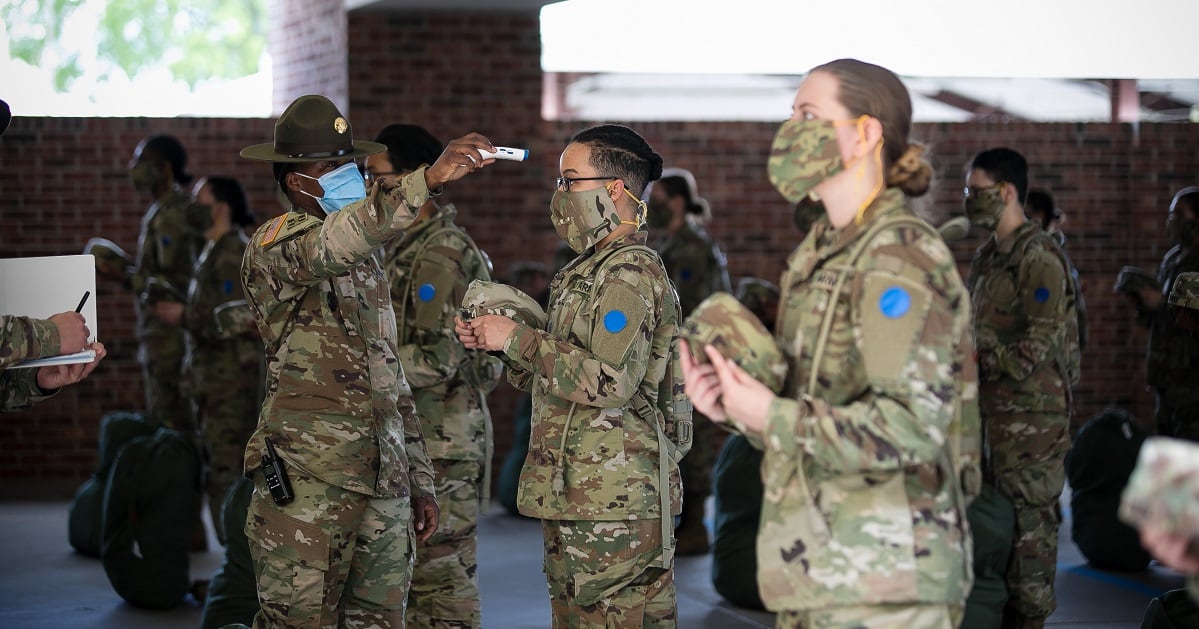Although the coronavirus pandemic has lowered basic training graduation rates this year, Army and Air Force leaders aren’t expecting shortfalls in their respective end-strength numbers as a result, officials of the two services said Friday. They credited the expected success to historically high retention rates.
Though both services had to significantly cut back on the number of trainees attending basic training — making room for increased social distancing and screening measures — the large decrease was short-lived, according to generals from the Army and Air Force who spoke with reporters at the Pentagon on Friday.
“We are at, what I would call, over 90 percent of our traditional capacity,” said Maj. Gen. Andrea D. Tullos, commander of the 2nd Air Force, which is responsible for the service’s basic military and technical training. “But we are at 100 percent production for what the Air Force is asking us to produce for the end of this year.”
RELATED

The Air Force lowered the basic military training capacity to about 60 percent of its traditional load when the pandemic started this spring, said Tullos. The Army cut its production capacity by roughly half, officials said previously.
But both services have since ramped back up to nearly full capacity.

“For the Army, we’re actually sitting in the same situation as the Air Force,” said Maj. Gen. Lonnie G. Hibbard, commander of the Army Center for Initial Military Training.
“As of this last week, we’re at 90 percent fill for all three components,” which includes the Army National Guard, Army Reserve and active-duty force, Hibbard added.
Due to a turbulent U.S. economy, the Air Force and the Army are also retaining more service members than they normally would, which has helped make up the difference.
“As the Air Force mentioned,” Hibbard said, “because end-strength is a combination of recruiting and retention and because of the current environment in the civilian sector, our retention is also through the roof.”
The Department of the Army has continued to adjust the number of trainees required of Hibbard’s command in order to keep the service within its end-strength guidelines.
The Army’s intended end-strength goal for fiscal year 2020 is 485,000 soldiers in the active-duty force. The Air Force’s active-duty end strength target for fiscal 2020 is 332,800.
Tullos said the Air Force will hit its end-strength goal at the current basic training production rate.
“We will not be able to produce more … or we will hit our congressional ceiling,” she added.
Kyle Rempfer was an editor and reporter who has covered combat operations, criminal cases, foreign military assistance and training accidents. Before entering journalism, Kyle served in U.S. Air Force Special Tactics and deployed in 2014 to Paktika Province, Afghanistan, and Baghdad, Iraq.





